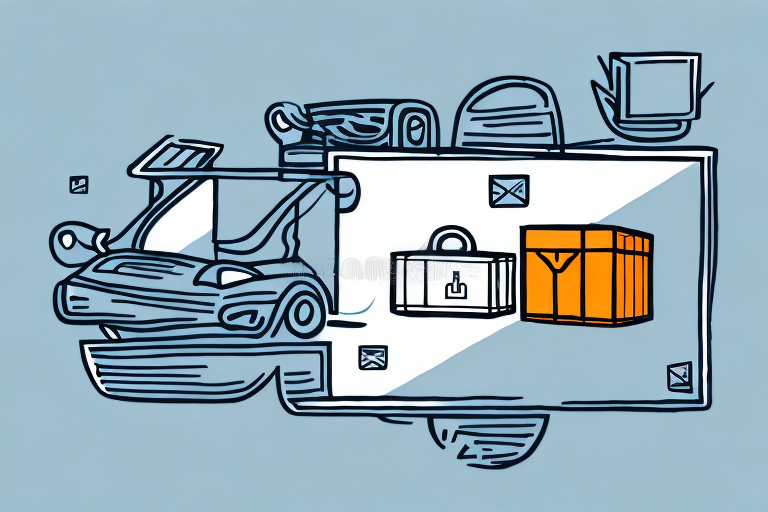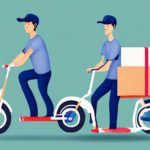Understanding Courier Services
Courier services play a crucial role in the transportation of parcels and documents both domestically and internationally. These services can be categorized into two main types:
Domestic Courier Services
Domestic courier services operate within a single country, offering faster and more affordable delivery options. They typically provide streamlined logistics, which include efficient routing and reduced transit times. According to the Statista report, the domestic courier market in the U.S. was valued at over $20 billion in 2023.
International Courier Services
International couriers handle shipments between different countries, dealing with complex logistics such as customs clearance and adherence to international regulations. While generally more expensive and slower than domestic services, they offer a broader range of delivery options, including express and door-to-door services. The IBISWorld report indicates that the global courier services market continues to grow, driven by the rise in e-commerce.
Tracking and Delivery Confirmation
A reliable tracking system is essential for ensuring packages reach their destination safely and on time. Top courier services provide real-time tracking updates and delivery confirmations. This transparency not only enhances customer satisfaction but also reduces the risk of lost or delayed packages.
Assessing Risks in Package Collection
As e-commerce continues to expand, the volume of packages being transported increases, heightening the risks associated with package collection.
Common Risks
- Loss or theft of packages during transit
- Damage to packages
- Injuries from improper handling of heavy or hazardous packages
According to the Bureau of Labor Statistics, workplace injuries in the courier industry have seen a slight increase, emphasizing the need for proper training and safety measures.
Mitigating Risks
Courier companies must implement comprehensive training programs covering safe lifting techniques, the use of protective gear, and handling of hazardous materials. Additionally, maintaining robust insurance policies can help cover any damages or losses incurred during transportation.
Selecting the Right Courier Service Provider
Choosing the appropriate courier service provider is pivotal for ensuring safe and efficient package collection.
Reliability and Track Record
Opt for a provider with a strong reputation for timely deliveries and minimal losses. Reviews and industry ratings can offer insights into a company's reliability.
Pricing and Services Offered
Compare pricing structures and service offerings, such as express delivery, door-to-door service, and specialized handling for fragile or oversized packages.
Customer Service and Support
A responsive customer service team can resolve issues promptly. Ensure the provider offers multiple support channels, including phone, email, and live chat.
Security Measures
Evaluate the security protocols in place to safeguard packages during transit. This includes secure handling practices, tracking capabilities, and insurance coverage.
Essential Tools and Best Practices for Safe Package Collection
Equipping yourself with the right tools and adhering to best practices are essential for the safe and efficient collection of courier packages.
Necessary Tools and Equipment
- Hand Trucks and Dollies: Facilitate the movement of heavy packages
- Straps and Safety Gloves: Ensure secure handling and protect against injuries
- Reliable GPS Systems: Optimize route planning for timely collections
- First Aid Kits: Preparedness for any on-site emergencies
Best Practices
- Conduct a risk assessment before collecting packages to identify potential hazards
- Use proper lifting techniques to prevent injuries
- Maintain clear communication with senders and recipients regarding delivery instructions
- Regularly update and monitor tracking information to manage deliveries effectively
Handling Special Packages
Different types of packages require specific handling to ensure their safe delivery.
Delicate and Fragile Items
Use additional protective packaging materials such as bubble wrap, foam inserts, or insulated boxes. Handle these packages with care to prevent damage.
Hazardous Materials
Packages containing hazardous materials must be handled according to strict regulations. Ensure the use of appropriate protective gear, and follow all safety protocols to mitigate risks.
Managing Unexpected Situations
Despite thorough planning, unforeseen issues can arise during package collection and delivery.
Damaged or Incorrect Packages
Inspect packages upon receipt. If a package is damaged or the contents are incorrect, contact the courier service provider immediately to report the issue and seek a resolution.
Lost or Delayed Deliveries
Utilize the tracking system to monitor the status of your package. In cases of significant delays or lost packages, escalate the issue to customer support and consider filing a formal complaint if necessary.
Post-Collection Management and Receiver Rights
After collecting a package, proper management ensures that it reaches its final destination securely.
Tracking and Monitoring
Continue to track packages even after collection to stay informed about their progress. This proactive approach allows for timely interventions if issues arise.
Proper Storage and Delivery
Store packages in a secure location until delivery is required. When delivering, ensure that packages are handed directly to the intended recipient and obtain a signature confirmation to maintain accountability.
Understanding Receiver Rights
As a recipient, you have the right to inspect packages upon delivery. You may refuse delivery if the package appears damaged or suspicious. Additionally, you are entitled to compensation for lost or delayed packages as per the courier service provider’s policies.
For more detailed information on your rights, refer to the Federal Trade Commission guidelines on shipping and delivery rights.
Conclusion
Ensuring the safe and efficient collection of courier packages involves understanding the basics of courier services, assessing and mitigating risks, selecting a reliable service provider, using the right tools, and adhering to best practices. By implementing these strategies, you can minimize complications and ensure that your packages are handled with the utmost care. Staying informed about your rights and maintaining open communication with your courier service provider further enhances the overall delivery experience.




















